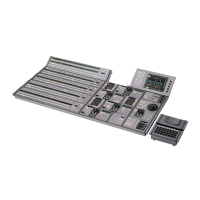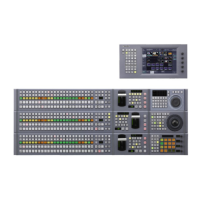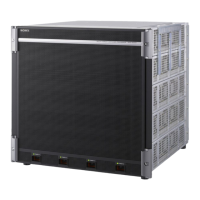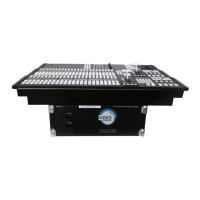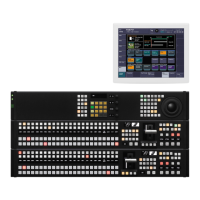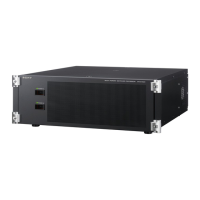Basic Video Processing 21
Chapter
1
MVS-8000X/7000X
Functions
Powerful frame memory functions
The frame memory can hold approximately 1000 frames in
an HDTV system (approximately 2000 frames in 720P/
59.94
format), or approximately 5000 frames in an SDTV
system in 480i/59.94 format, or approximately 4000
frames in 576i/50 format, and allows eight frames (four
frames in 1080P format) to be recalled simultaneously.
Link operation with DME
You can use a wide range of DME functions, including
DME wipes and processed key functions as though they
were part of the standard switcher functions.
Designed for use in a live broadcasting
environment
Flexible control panel layout
Because of its modular design, the various sections of the
control panel can be laid out as required. This allows a
flexible layout appropriate to the system operation.
High-performance user interface
The menu control block provides a large color LCD panel,
with rapid touch-panel menu selection.
The source name displays and buttons in the Flexi Pad
TM
and shotbox control blocks have color backlit LCD
displays. The signal names, and graphical representations
of the patterns associated with buttons provide intuitive
feedback, and allow the immediate decisions that are
required in a live operating environment.
Basic Video Processing
This section introduces basic functions used for video
processing on the switcher.
Transitions
In the M/E banks and PGM/PST bank, the switch from the
current video stream (appearing on the corresponding
program monitor) to a new video stream is referred to as a
transition.
In the M/E banks and PGM/PST bank, you can change one
of the images, the background, and keys 1 to 8
(downstream keys 1 to 8 in the PGM/PST bank), and also
vary combinations of these simultaneously.
Notes
When the signal format is 1080P, four keyers can be used
(keys 1 to 4).
The following are examples of transition.
Changing the background
A background transition switches from the video currently
selected on the background A bus (the current video) to the
video selected on the background B bus (the new video).
Background A
Transition
Background B
In the default selection of flip-flop mode (see page 110),
the background always switches in the direction from the
A bus to the B bus. When the transition completes, the
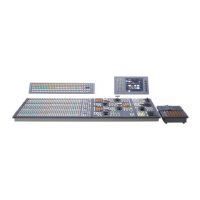
